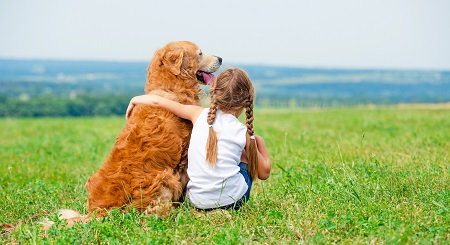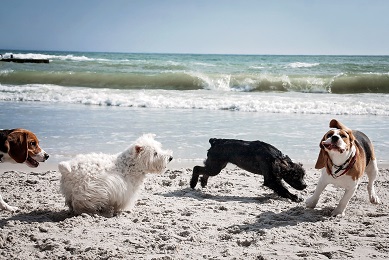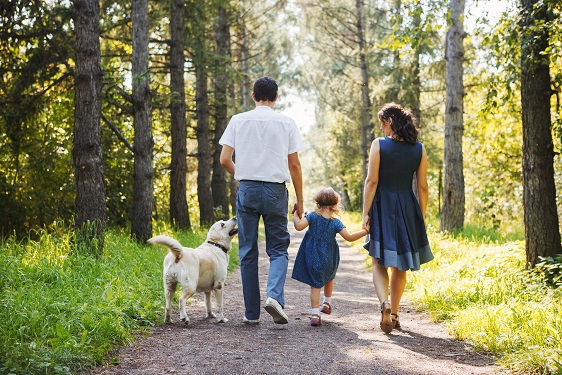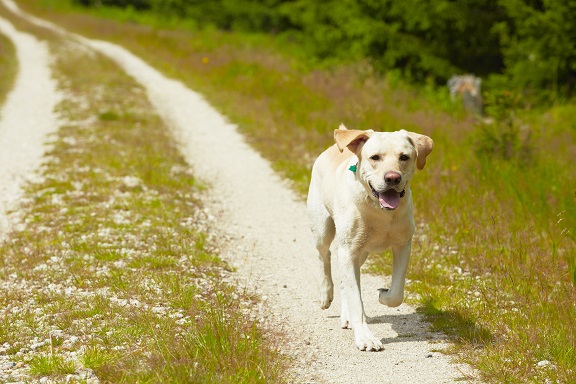Barking Dogs
Barking is a natural way for dogs to communicate. However excessive or persistent barking can be a nuisance to neighbours. Different people have different tolerance levels for barking, what one person considers a nuisance may not be a nuisance to someone else. Barking can occur when a dog is excited; stressed; bored; lonely; provoked; hungry; sick; or in discomfort. Excessive barking may also result from lack of exercise, inadequate shelter or yard space, moving house or a change to the family’s structure. A dog may also bark to give a warning, seek its owner’s attention, protect its territory, announce the arrival of visitors or respond to a distant sound or signal.
Before you make a complaint to Council we suggest you try and work this through with your neighbour. Dog owners may not be aware that their dog is barking or that there’s a problem because their dog mainly barks when they are away from home. Communication between neighbours and early intervention often helps in preventing the issue escalating. When talking to your neighbour it is helpful to have some information of the barking problem, such as when the barking happens and any factors that contribute to the barking such as the postman riding past, or someone walking past the house.
If you are uncomfortable talking to your neighbour, Council have a template letter that you can fill out and put into your neighbours letter box. This letter can be anonymous or you can include your details onto it.
Please find more information about barking dogs here.

What is nuisance barking?
Barking noise that disrupts or inhibits an activity ordinarily carried out on adjoining or nearby residential premises, such as holding a conversation or sleeping.
Complaint process
To make a formal complaint, you may report the issue to our Community Safety Team on 8555 7000 between 9:00am and 5:00pm Monday to Friday. Please be aware that Council will require your support to take the matter any further. You will then be sent out a barking dog pack which includes a letter you can give to your neighbour, our barking dog procedure and a statement form that must be filled out and returned to Council before the investigation can begin.
Once this statement has been received a 7 Day barking dog diary will be provided to you to complete and return. On receipt of a completed barking dog diary an Authorised Officer will assess the behaviour of the dog from this diary and work with the owner to resolve the problem; most owners are willing to work with Council to find ways to stop their dog barking.
If the barking continues then a full investigation is conducted, including barking diaries to neighbours and if the problem persists, expiation notices may be issued or a Nuisance Barking Order may be placed on the dog, legally making the owner responsible to take steps to reduce the barking.

I've been told my dog barks, what can I do?
The first step is working out the cause of the excessive barking. Council suggests you “pretend” to leave home. Follow your normal routine, park your car down the street out of distance for your dog to smell or hear you and listen to see if your dog is barking.
Exercise is the easiest resolution to a barking dog, a tired dog will not bark if it’s sleeping. Regular exercise tires your dog easily; Adding in some extra training activities to your walk such as sit and drop will wear your dog out mentally as well as physically. If your dog barks during the day, try walking in the morning. Another alternative suggested is to break up your walks and if you generally go on a 40 minute walk try 20 minutes in the morning and 20 in the afternoon.
Boredom can be a big factor in barking dogs; give your dog a chew toy containing food, or try some stimulating dog toys that keeps the dog working for their treats. Big meaty bones will also be the highlight of your dog’s day as they find a place to bury it once they’ve finished munching on it.
If your dog is barking at every disturbance outside your yard, try blocking your dog’s view so they can’t see beyond the fence or secure your dog inside or in the backyard, away from distractions. Consider keeping your dog inside at night to stop him from barking at the wildlife at night.
Another suggestion is getting in a professional trainer to help your dog and find a solution to its barking. Some useful contacts are:
- Bark Busters - 1800 067 710
- Fleurieu Education For Dogs And Owners - 8556 9130
- Positive Dog Training - 0418 886 698
Change to family structure
Family changes can disrupt and upset a dog’s perception and how it fits into the family structure. Changes can include marital separation, marriage or the arrival of a new baby. The dog may view new arrivals as a threat to its position in the family which could result in aggressive behaviour and resentment. Owners need to take firm but loving action so the dog understands and accepts the family addition and its new position in the family. It is important that the dog understands a new baby will hold superior position in the family and it’s advisable that you never leave the dog alone with a baby. A death or separation in the family can cause the dog confusion and insecurity resulting in behavioural problems. Dogs have the capability to mourn a missing family member and will bark, howl or whimper as a way of dealing with the loss. Comfort and reassurance is required to help a dog through times of a family reduction.
Children and dogs further information.

Dog Control Orders
Council has the ability to issue various dog control orders with the aim of removing risk or altering behaviour. Requirements of orders vary and reflect the actions required to ensure a previous incident is not repeated. Failure to comply with a Dog Control Order is an offence.
Barking Dog – Barking Dog Orders are applicable for dogs that cause a nuisance and have created noise by barking or otherwise in circumstances that would constitute an offence.
Requirements of a barking dog order – All reasonable steps are to be taken to prevent the dog repeating the behaviour again.
Nuisance Dog – Nuisance Dog Orders are applicable for dogs that persistently escape and are at large, are allowed to wander or perhaps consistently bother someone.
Requirements of a nuisance dog order – The dog must be registered and kept inside of in a fenced yard approved by an Animal Management Officer and must be on a lead at all times when in public. The owner must ensure that the dog cannot repeat the behaviour again.
Menacing Dog – Menacing Dog Orders are applicable for dogs that behave in a manner that a reasonable person would think the dog would attack, harass or chase if given the opportunity. The dog has not caused harm but the potential to cause harm is real and evident.
Requirements of a Menacing dog order – The dog must be microchipped, registered and wear a dangerous dog collar at all times. It must be kept inside or in a fenced yard and on a lead and muzzled when in a public place. The owner must ensure the dog cannot repeat the behaviour again.

Dangerous Dog – Dangerous Dog Orders are applicable for dogs that have caused harm and pose a threat to the public. This order is to be applied where a dog has been found to have attacked and is considered dangerous.
Requirements for a Dangerous Dog order – The dog must be desexed, microchipped, registered and wear a dangerous dog collar at all times. A dangerous dog warning sign must be displayed prominently at all entrances to the property. The dog must be kept inside or in a fenced yard and on a lead and muzzled when in a public place. The dog and owner must successfully complete an approved training course specific to the Order and the owner must ensure the dog cannot repeat the behaviour again.
Destruction – Destruction orders are applicable for dogs that have caused significant harm and that are likely to do so again. The act refers to such dogs as being “unduly” dangerous. The public threat posed by such dogs is unacceptable.
Requirements of a Destruction order – The dog is to be destroyed and until destroyed must be kept at a place approved by Council.
Wandering at Large
Dogs that wander on the streets or in public areas without an owner present are referred to as dogs “wandering at large.” These dogs cause a nuisance, are often distressed, may cause property damage and may attack or harass people or other animals. In some cases they cause road accidents resulting in injury to the dog and on occasion to vehicle occupants. All of which becomes the responsibility of the owner of the dog.
There are many reasons why a dog wanders including behavioural traits for example looking for a mate or simply poor fencing at home or a gate left open by a visitor. In most instances if the dog is registered it can be returned to its owner. It also assists identification if your dog wears a collar with registration disc and has a nametag with your mobile phone number.

